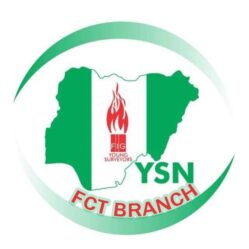In the rapidly evolving world of land surveying, new technologies are transforming the way professionals capture and analyze data. This month, we’re thrilled to announce that our Educational Tuesday sessions will be themed around exploring some of these technologies and Providing the necessary learning links.
Today our focus will be on Parcel Fabric. Parcel Fabric was developed by Esri, a leading provider of Geographic Information System (GIS) software. Esri’s ArcGIS platform includes tools and frameworks like Parcel Fabric that are designed to manage, analyze, and visualize spatial data.
Let’s do a deep dive together
What is Parcel Fabric?:
At its core, parcel fabric is a framework for organizing and storing cadastral data, which includes information about land parcels, boundaries, ownership, and related attributes. It is designed to handle complex datasets involving numerous parcels, each with unique characteristics and legal definitions.
Key Components of Parcel Fabric:
Parcels: The fundamental units within the parcel fabric, representing individual land properties. Each parcel includes spatial geometry (such as polygons) and descriptive attributes (such as ownership details, land use, and zoning).
Lines and Boundaries: These define the edges of parcels and include details about the nature of boundaries, such as whether they are natural, legal, or administrative.
Points: Critical reference points that mark the corners or significant points along parcel boundaries. These points often correspond to survey markers or other physical features.
Connections and Relationships: Parcel fabric supports the complex relationships between parcels, such as adjacency, overlaps, and easements. This helps in understanding how parcels interact with one another and with larger administrative boundaries.
Topology Rules: A set of rules that govern the relationships and interactions between parcels, ensuring data integrity and accuracy. Topology rules help prevent errors such as overlapping parcels or gaps between parcels.
Benefits of Using Parcel Fabric:
Record-driven workflows: Every land transaction begins with a legal record such as a development plan, plat, deed, or record of survey. Land parcels in the ArcGIS Parcel Fabric are created and edited in response to changes in the legal record. Storing the legal reference of the parcels is built into the design of the ArcGIS Parcel Fabric.
Flexible data model: The ArcGIS Parcel Fabric comprises separate parcel types such as subdivision/plat boundaries, lots, and tax parcels. Each parcel type can have its schema and behaviors.
Historical parcels and lineage: Besides tracking the legal record that causes parcels to be created and edited, the ArcGIS Parcel Fabric saves the parent parcel data as historic when edits are performed. The historic parcels maintain a lineage to the parent and children parcel
Improve spatial confidence: ArcGIS Parcel Fabric provides the ability to improve the spatial confidence of your authoritative land records by analyzing the measurements of your boundary data.
Web GIS Enabled: ArcGIS Parcel Fabric can be published and consumed as a feature service that allows you to push your data in real-time, making it available to other apps on the platform instead of viewing a static copy.
This is just a sneak peak of what Parcel fabric. To learn More you can visit some of this links.
https://pro.arcgis.com/en/pro-app/latest/help/data/parcel-editing/whatisparcelfabric.html
https://www.esri.com/en-us/arcgis/products/arcgis-parcel-fabric/overview#web-gis-enabled
Thank you for reading. We expect your feedback (either as a contribution or a question on this topic)
Signed ✍ :
a. Surv. Uju O. IZUEGBU, MNIS
Chair: YSN-FCT
b. Surv. Angela Omamuyovwi ANYAKORA
Head: Education Committee YSN-FCT
Announcer:
Moyinoluwa Olajide
Member: Education Committee YSN-FCT


